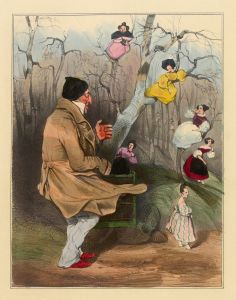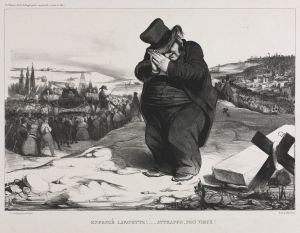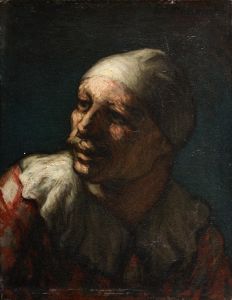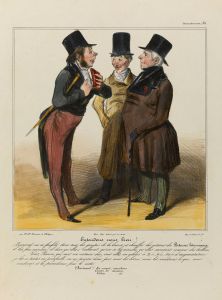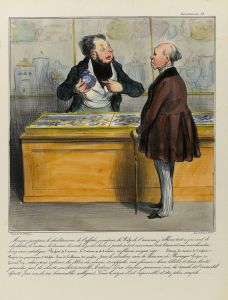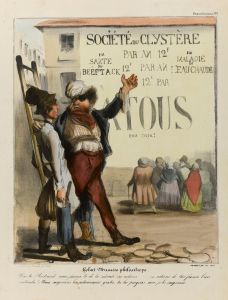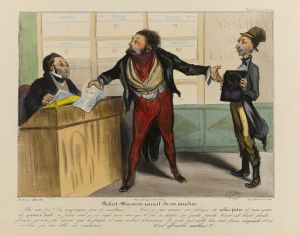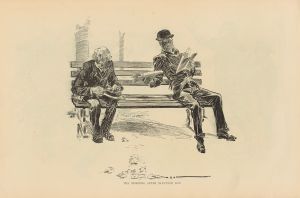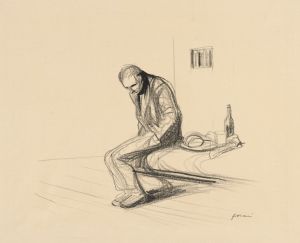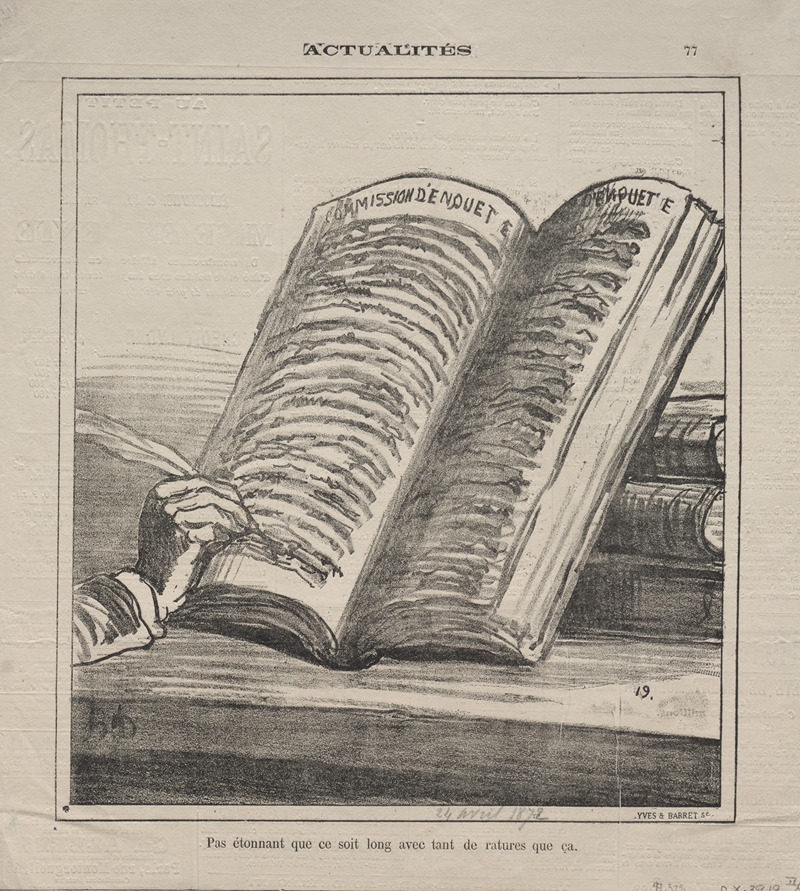
It is not surprising that it is long with so many corrections.
A hand-painted replica of Honoré Daumier’s masterpiece It is not surprising that it is long with so many corrections., meticulously crafted by professional artists to capture the true essence of the original. Each piece is created with museum-quality canvas and rare mineral pigments, carefully painted by experienced artists with delicate brushstrokes and rich, layered colors to perfectly recreate the texture of the original artwork. Unlike machine-printed reproductions, this hand-painted version brings the painting to life, infused with the artist’s emotions and skill in every stroke. Whether for personal collection or home decoration, it instantly elevates the artistic atmosphere of any space.
Honoré Daumier, a prominent French artist known for his satirical works, created the painting "It is not surprising that it is long with so many corrections." Daumier was born in 1808 in Marseille, France, and became renowned for his contributions to caricature and social commentary through art. His works often critiqued the political and social issues of his time, reflecting his keen observation of the human condition and society.
Daumier's career spanned several decades during the 19th century, a period marked by significant political upheaval and social change in France. He lived through the July Monarchy, the 1848 Revolution, and the establishment of the Second Empire under Napoleon III. These events heavily influenced his work, as he used his art to comment on the political climate and the lives of ordinary people.
"It is not surprising that it is long with so many corrections" is one of Daumier's lesser-known works, and like many of his pieces, it likely contains elements of satire and social critique. Daumier was a master of capturing the essence of his subjects with expressive lines and a keen eye for detail. His ability to convey complex ideas through simple yet powerful imagery made his work accessible and impactful.
Daumier's artistic style is characterized by its fluidity and expressiveness. He often employed a loose, sketch-like technique that allowed him to quickly capture the essence of a scene or character. This approach is evident in his lithographs and paintings, where he used bold lines and a dynamic composition to draw the viewer's attention to the central themes of his work.
Throughout his career, Daumier produced thousands of works, including paintings, lithographs, and sculptures. His lithographs, in particular, gained widespread popularity and were published in various newspapers and journals, allowing his satirical commentary to reach a broad audience. Despite facing censorship and political pressure, Daumier continued to produce art that challenged the status quo and highlighted the absurdities of contemporary society.
In addition to his satirical works, Daumier also created more serious pieces that explored themes of justice, poverty, and the human experience. His empathy for the struggles of ordinary people is evident in these works, which often depict scenes of everyday life with a sense of dignity and respect.
Daumier's legacy as an artist is significant, as he paved the way for future generations of artists who sought to use their work as a means of social and political critique. His influence can be seen in the works of later artists who embraced similar themes and techniques.
While specific details about "It is not surprising that it is long with so many corrections" are limited, the painting is a testament to Daumier's skill as an observer and commentator on the world around him. His ability to capture the complexities of human nature and society through art continues to resonate with audiences today, solidifying his place as one of the most important artists of his time.





